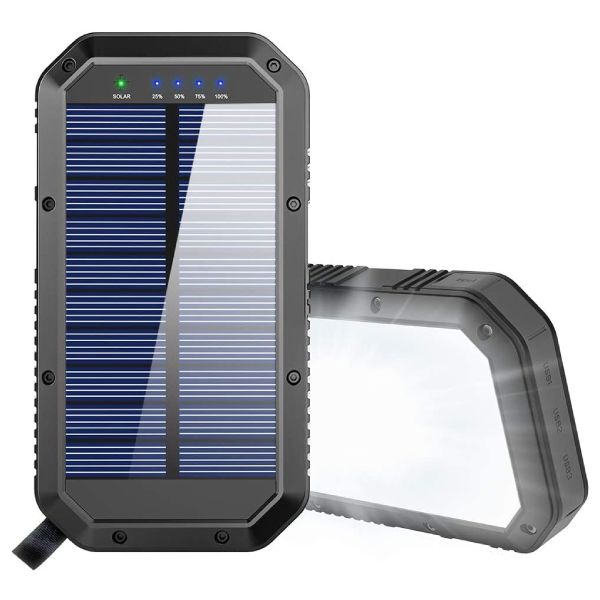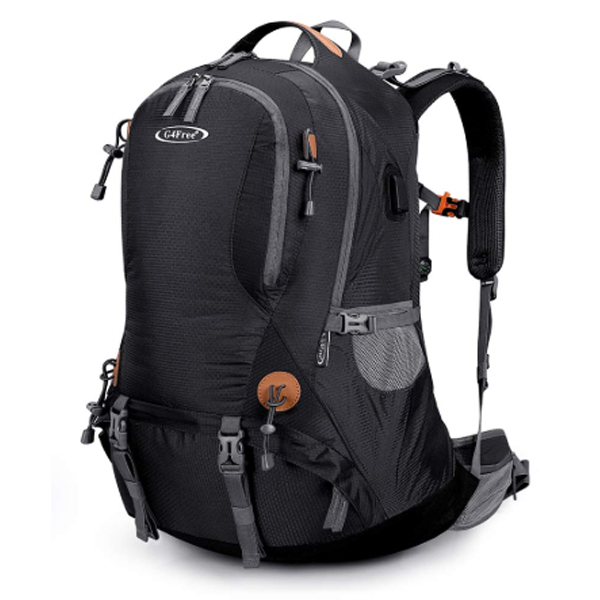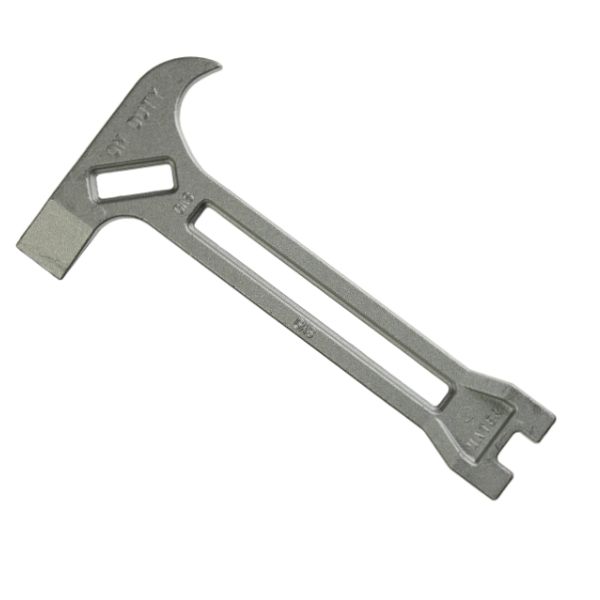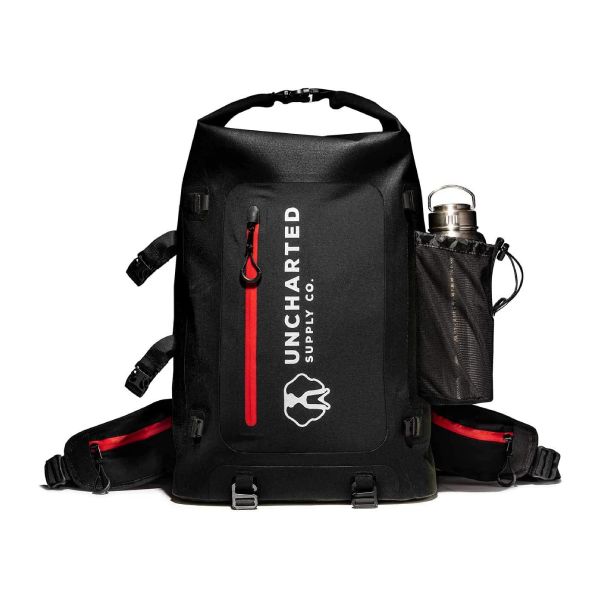Best Emergency Power Sources
Learn about emergency home power needs, blackout plan, product pros/cons, and top recommended products.
The power can go out at any time, for any number of reasons. Whether it's a rainstorm that has knocked out the power or a snowstorm that has trapped you in place, we know that powering your home and critical applicances and devices is one of the highest priorities in emergencies.
During a power outage or power surge, you can be left freezing or overheated, depending on the time of year. It's crucial to choose the right emergency power source for you and your home before you lose your power. There are many different factors that go into choosing emergency power sources. Each household should have a way to power its heater, its water heater, and any fridges and freezers at the very least.
There isn't a single household that is immune to power outages. And, the strangest and most unexpected of disasters can strike at any time.
Massive Power Outage in Texas
The Texas winter storm of 2021 killed 57 people, most succumbing to hypothermia. Countless homes lost power, leaving thousands of people to suffer freezing temperatures until the storm cleared. Thankfully, many Texans had taken precautions and prepared ahead of time.
In February a sustained winter storm swept across the country. When it hit Texas, where many homes and residents aren't accustomed to severe, prolonged cold, the power grid wasn't able to keep up with the massive, unusual demand and eventually crashed for many parts of the state. Entire communities went dark. Whatever they had in their homes was what they had to survive.
Thanks to their emergency power sources, they had a way to keep themselves and their families warm. They used emergency generators to power heaters, and battery-packs to keep phones alive just in case further emergencies struck.
Having access to multiple power sources can help you manage different types of emergencies. Because you never know what the future may hold, it's best to keep several short-term power sources, like rechargeable batteries, and at least one larger power source, like an emergency generator.
Being prepared ahead of time and knowing how to operate an emergency power source makes all the difference when making it through a power outage.
Best Overall Generator
Multi-Fuel Generator
Dual fuel porable generator with electric start for emergency power
Buy on AmazonBest Powerbank
Portable, Waterproof Power Bank - Rugged
Rugged 10000mAh portable, waterproof power bank and USB charger
Buy on AmazonBest Budget Generator
Gas Generator - Budget Friendly
Dual fuel porable generator with electric start for emergency power
View on AmazonBest Hand Crank Power
Hand Crank/Solar Rechargeable AM/FM/SW Radio, LED Flashlight, Power Bank - Rugged
Emergency hand crank/solar powered energy source, radio, LED flashlight
Buy on Amazon
About This Article
Content:
Scope:
Difficulty:
Table of Contents
Devices and Equipment for Short Term Power Outages
A short term power outage is when your home loses power for a day to a few days. These power outages aren't too dangerous if the weather is mild, but that doesn't mean that you shouldn't prepare. Since you never know how long a blackout will last, it's best to prepare for the worst and hope for the best.
Windstorm in Northern Idaho
Every few years windstorms knock down a lot of pine trees in Northern Idaho and bring down powerlines and power stations. In 2021 a large storm knocked down thousands of trees in Eastern Washington and the Idaho panhandle. Power was wiped out to hundreds of thousands of home. For some communities the power was out for up to 10 days. Since the storm happened in the middle of the winter, the situation got dangerous for many families.
The communities jumped to action and removed trees and helped families stay warm and safe. It took weeks to cut our way through the debris. Some houses were cut in half or thirds from numberous trees ripping through the enire structure.
Families with generators hosted other families for bathing, doing laundry, keeping food cold and frozen, etc. Those who were prepared were able to help others get life back to normal.
Blackout Plan Checklist
We already know the power is going to go out at some point. We should plan ahead so we know what power sources we have access to, which ones to employ first and what items to power up. Make these decisions ahead of time:
- Determine which devices and appliances are absolutely critical during an outage. Here are some items we think should have top priority:
- Medical devices (respirators, dialysis, etc.)
- Refrigerator, freezer
- Flashlights
- Phones, radios, 2-way radios
- Heater, furnace
- A/C
- Key lights (family room, kitchen)
- Computers with sensitive information
- Pet life support (fish tanks, etc.)
- Determine some nice-to-have, low-draw devices and appliances to power up for creature comforts. Consider these options:
- Extra lights
- Water heater
- Tablets and PCs
- Make a list of these items in order of priority.
- Determine how much power each of these items requires.
- Determine which power source will power each item. Some can be powered by emergency power banks while others may require a generator. If the list is long, you'll need a robust generator.
- Place flashlights in easy-to-access locations in your home so you can have light to start a generator or locate the other power sources.
Make your list and draw a line below the ultra critical items. Start there with your power source shopping. Make sure you can power those items first and then work on the rest.
Emergency Short Term Power Sources
There are numerous emergency short term power sources to get you through a power outage. It's just a matter of figuring out what you and your family will get the most use out of.
When considering your power sources, make sure they're easy to carry and operate. If you need to evacuate, you want a way to charge your phone and keep it alive - it's your fastest way to call for help.
One of your best options are portable generators, which can cost anywhere between $350-1,000. Portable generators are better for sheltering in place, rather than on-the-go power. They require more maintenance than other devices, and give off pollutants and exhaust fumes.
Another top option for to consider is a whole house generator. A whole house generator will automatically come on during a power outage, which can come in handy during severe storms and even snow storms.
They cost between 2,000 and 6,000 dollars, so make sure you're able to install it in the first place before you set the money aside. Whole house generators cannot be installed in areas that have a high flood risk, and cannot be moved in the event of a flood.
Emergency Preparedness Resources

Popular Emergency Checklists
All | Bug Out Bag | 72-Hour Kit |
Evacuation | First Aid
Scouting - Wilderness First Aid
Emergency Plan (ready.gov)
Emergency Contact Info (ready.gov)
Emergency Plan for Schools (ready.gov)
Rechargeable Batteries and Chargers
Rechargeable batteries and chargers have been used in homes for years. The provide both reusable resources and easy-to-use power. Whether they're purchased for casual use or for emergencies only, they're one of the most reliable power sources you can get your hands on.
Rechargeable batteries can be used to power a multitude of emergency devices, including flashlights and radios. They are easily operated and very affordable in the long run. Rechargeable batteries are also better for the environment as a whole.
Pros/Cons of rechargeable batteries
Pros:
- Affordable
- Easy to use
- Environmentally friendly
- Good for many uses
Cons:
- They have a lower voltage rating
- The up-front cost can be steep
- Unpredictable shelf life
- Very short term
Recommended products
We recommend a long lasting battery that can be cycled many times. We have tested a number of them including their voltage and weight. Be sure to set your budget as you purchase your batteries. A good budget to set for rechargeable batteries and their respective charger should be between $20-50.
Rechargeable Batteries
- AA Rechargeable Batteries - NiMH LSD (low self discharge), can be recharged up to 2,100 times in their lifetime, and can hold 70% of their charge for up to 10 years.
- AAA Rechargeable Batteries - NiMH LSD (low self discharge), can be recharged up to 2,100 times in their lifetime, and can hold 70% of their charge for up to 10 years.
Rechargers
- USB - A USB battery recharger can be plugged into any USB compatible device like PC, tablet, phone charger, power bank, solar charger, car cigarette lighter, etc. They are extremely flexible. This device allows for single battery charging and independently charges each battery for its optimal charge for the 9 battery slots.
- Wall - A wall battery recharger can be plugged into any wall outlet for rapid charging. This device allows for single battery charging and independently charges each battery for its optimal charge for the 9 battery slots.
Other features this charger has aside from single slot charging and its ability to charge two different types of rechargeable batteries is its LCD panel. That panel indicates each slot's current charge, telling you exactly how long each battery needs to sit.
All in all, investing in reliable batteries that can be reused and recharged again and again makes them worth every penny.
Best Rechargeable Batteries
Best Rechargers
Portable Power Banks
Portable power banks are one of the best electronics you can stow away in an emergency kit. Portable power banks are tiny devices that can fit in your pocket, and can be used to power many different electronics.
These types of power banks can be used to charge cell phones, tablets, and other devices that you can use a power block to charge. Because many portable power banks are so small, they can fit anywhere, whether it's in your pocket, purse, or emergency kit.
Having at least one power bank around is the best way to ensure that you have power at all times.
Pros
- Portable
- Convenient
Cons
- Easily lost
- The grid is required for recharging
Recommended products
There are plenty of reliable portable power banks on the market today. It's wise to set a budget before going on a spending spree. You can expect to spend up to $200 on portable power banks, but the amount depends on how many you decide to purchase.
- Portable, Waterproof Power Bank - Perfect for all types of emergencies, this portable power bank is tough enough to get you and your devices through years worth of power outages. A waterproof power bank is one of the best portable power banks for almost all types of emergencies. Water, dust, and shockproof, this power bank holds its charge to charge various devices all while powering its own LED flashlight that can shine for up to 45 hours.
- Compact Power Bank - Another great option is a compact power bank. Despite its size, it truly packs a punch with its voltage input of 5, allowing it to deliver one of the fastest charges for a wide array of devices. This tiny power bank can fit right in your pocket, making it your best option to pack away in an emergency kit.
For portable power banks, you should have one per family member, especially if everyone has their own mobile devices. For the average family, you can expect to spend anywhere up to $200 on portable power banks.
Best Power Banks
Portable, Waterproof Power Bank - Rugged
Rugged 10000mAh portable, waterproof power bank and USB charger
Buy on AmazonPortable, Compact Power Bank - Compact
Ultra compact 10000mAh portable power bank and USB charger
Buy on AmazonPortable Solar Charger, Power Bank, LED Light
High capacity solar powered 25000mAh portable power bank and USB charger
Buy on AmazonHand Crank/Solar Rechargeable AM/FM/SW Radio, LED Flashlight, Power Bank - Rugged
Emergency hand crank/solar powered energy source, radio, LED flashlight
Buy on AmazonHand Crank/Solar Rechargeable AM/FM Radio, LED Flashlight, Power Bank - Budget
Emergency hand crank/solar powered energy source, radio, LED flashlight
Buy on AmazonPortable Solar Chargers
A portable solar charger is a type of charger that uses solar energy to create electricity that can be used to charge both batteries and devices. They can be used to recharge power banks, phones, and battery chargers. Investing in a portable solar charger is a smart move because during the day, it can be charged and hold its power through the night.
Pros
- Reliable
- Good for the environment
- High output
- Foldable, portable design
Cons
- Sunlight is limitation
- May be expensive
Recommended products
The best portable solar charger out there will always be those with large panels and multiple outlets to allow you to charge a few different items at once.
- Portable Solar Charger - This portable solar charger is one of the best on the market, with 4 panels to allow for high input charging, and even has a polymer surface to protect it from rain and fog. All of its charging ports can be covered by both a rubber cover and a cloth flap when not in use for additional protection. Because of its size, it's easily folded up and tucked away, making it perfect for emergency kits and other bug-out bags.
- Portable Solar Charger - Another portable solar panel can be found right here - it even doubles as both a power bank and an LED light. This bank has 36 LEDs to be exact, and can be used to light up an area while you charge a device or two.
Multi Purpose Charging Devices
A number of products provide multi-purpose power resources. Some have power cranks with small generators and solar power cells to power radios, phones, and other small devices.
We recommend a power source like this for go bags (bug out bag, 72 hour kits). Having renewable energy during an evacuation could be crutial.
Best Solar Chargers
Portable Solar Charger, Power Bank, LED Light
High capacity solar powered 25000mAh portable power bank and USB charger
Buy on AmazonBest Multi Purpose Devices
Hand Crank/Solar Rechargeable AM/FM/SW Radio, LED Flashlight, Power Bank - Rugged
Emergency hand crank/solar powered energy source, radio, LED flashlight
Buy on AmazonHand Crank/Solar Rechargeable AM/FM Radio, LED Flashlight, Power Bank - Budget
Emergency hand crank/solar powered energy source, radio, LED flashlight
Buy on AmazonGas Powered Generators
In some communities gas powered generators are very commonplace. Many households and businesses have one for emergencies. From bad storms to common blackouts, gas powered generators are a very reliable power source, and their relatively easy to operate design makes them a fantastic option. If you often find yourself needing to shelter in place, having a gas generator outside of your home is a must.
Pros:
- Reliable
- Sturdy
- Easy to operate
Cons:
- Fuel is a limitation
- Typically not portable
- For outdoor use only
Recommended products
You can find portable generators in plenty of places, especially online.
- Best All Around Generator - A top option is a multi-fuel generator. This generator's 439cc engine can run on either propane or gasoline, making it a perfect backup for when the power fails you. This generator can run for up to 8 hours when filled with gasoline, and 5.5 when filled with propane. Because of its long run time, it's a perfect backup for making it through freezing cold or severely stormy nights.
We endured a power outage for days and powered all critical services. We came up with a scheduled 'run time'. Every 2 hours we'd run the generator for an hour and the refrigerator and freezer would return to optimal temperatures and we'd charge phones, laptops, flashlights, etc.
This particular generator is beefy enough to handle a large load. We can run a waterheater and a dryer on it when needed.
Our next step is to hardwire a line directly to the breaker panel. It'll cost us around $1000 but mean we can fire up the generator, flip a breaker switch and run all critical home services. Coming soon! - Best Budget Generator - The best budget generator option is able to run solely on gasoline. This portable generator can run for up to 12 hours to power many essential appliances. It also has a 3500 wattage output, and a 60 Hz frequency, so you know that this thing is no joke.
Best Gas Generators
Multi-Fuel Generator
Dual fuel porable generator with electric start for emergency power
Buy on AmazonGas Generator - Budget Friendly
Dual fuel porable generator with electric start for emergency power
View on AmazonDevices and Equipment for Long Term Power Outages
Sometimes power goes out, and you begin to imagine the worst. After prolonged outages you might wonder if your power will ever return, and maybe you find yourself wishing you had some other way of providing long term power. You realize you can't run long term with just a few small power banks and solar powered chargers. Whether you're living off the grid or not, it's wise to have a way to generate power of your own.
The first factor to consider is the area you live in. If you live somewhere that is prone to earthquakes, tornadoes or even hurricanes, you'll want to have a way to generate power that can be secured when needed.
It takes more than just deciding that you're going to live off the grid and throwing a couple of solar panels on your roof. While living off the grid does mean that you'll be free of electric bills and having to rely on electric companies, it also means more responsibilities on your part.
There are a number of appliances and devices that can require power long term. Some of these devices can include freezers, refrigerators, air conditioners, desktops and other computers, and even life-saving medical equipment. These should always be your highest priorities when it comes to supplying long-term power.
Emergency Long Term Power Sources
There are quite a few options for you as far as long-term power sources go.
These can range from solar panels to generating power from water. For long term power sources, there are many different options. Be sure to take your time to consider everything before making your decision - many of these options are permanent.
Fixed Solar Panels
Solar panels have been gaining more and more popularity in the last few years. Solar panels are a fantastic alternative to traditional power sources.
Solar panels harness light from the sun and convert it to energy, which can power an entire home or business when enough panels are in use. It is often thought that solar panels harness the heat instead of the light, but this is not true.
One of the biggest debates surrounding fixed solar panels is whether the up-front cost is truly worth it. As the situation currently stands, solar power is cheaper than it ever has been. Depending on when you install a solar system, you can become eligible for a federal tax credit.
It can also greatly reduce your electric bill, and save the average household over 1,000 dollars on energy a year. However, while the overall investment will save you money, the up-front can still be a harrowing factor for some people.
The actual cost of the solar system will vary by state, but the average cost of a 6 kW solar panel system can cost up to nearly 15,000 dollars.
Pros
- Relatively cheap overall
- Environmentally friendly
- Gives you independence
Cons
- High upfront cost
- Requires space
- Not mobile or movable
Recommended products
Because making the leap to solar power can be a bit intimidating, it may be best to use a smaller solar powered device as a sort of test run. It's the only way to determine if this is right for you!
We recommend consulting a local company to get an estimate. Because prices vary from state to state, we can only provide you with a very broad ballpark as far as pricing goes.
Depending on your location, the size of your system, and the cost per watt, you can expect to spend anywhere from 15,000 to 25,000 dollars up front.
Portable Solar Charger, Power Bank, LED Light
High capacity solar powered 25000mAh portable power bank and USB charger
Buy on AmazonWindmills
Using windmills to produce power has been practiced since the 9th century, and has evolved over the years. Windmills are one of the best ways to generate wind power, and is an amazing option to make off the grid living easy.
The average home in the United States uses roughly 830 kWh of electricity per month, so you'll have to be ready to generate a very large amount of electricity - which, believe it or not, is very possible.
But before you make the plunge and get windmills put in, you'll have to check with your local weather service to see what the average wind speed in your area is. You'll need to live in an area with an annual average wind speed of 14 MPH.
We'll begin with the pros.
- Low operating cost
- Renewable, clean source of energy
- An efficient use of land space
Cons:
- Need a lot of wind year round
- Potentially noisy
- Potentially dangerous for flying creatures
Water Turbines
You've probably heard of people generating power from water, and have wondered if you could pull it off yourself. Surprisingly, generating water power isn't that hard to do.
Hydro power comes from water turbines, which are rotary machines that convert kinetic energy into electric power. This power can be used to power your entire home - or at the very least, your emergency essentials.
If you are using hydropower to power your home in blackouts, all you have to worry about is the water maintaining a constant flow, and whether or not you have enough electricity stored away to get you through the blackout.
Pros:
- A renewable source of power
- Can easily meet demands
- Goes hand in hand with other emergency power sources
However, its cons are:
- The potential negative environmental impact
- Expensive up-front cost
- The need for flowing water nearby, whether it be stream or tidal
Much like windmills, having water turbines is something that requires an in-person consultation.
Choosing the Best Emergency Power Sources
Choosing the best emergency power sources for you isn't as daunting a task as it seems. Since you are at the very heart of your home and business, only you know what will work with your lifestyle and budget.
How to determine need
As you make your decision on the emergency power sources for your home and emergency bag, it's important that you consider all factors. What will need power the most in your home? Do you have any medication that has to be refrigerated? Maybe a child that needs a night light to feel safe?
You should prioritize items like that, and take a look around your home to determine anything else that is essential to how you live your daily life.
We'll go down the list of everything that should be considered, from most to least importance.
You should first focus on any life saving equipment. If you have medical equipment such as a ventilator in your home supporting any persons, they should be the first to receive emergency power.
Heart monitors as well as C-PAP machines should also have an emergency power source, as precious seconds of lost power could be life or death for far too many people.
Almost of equal importance, you should make sure you have a way to light your path. If your home loses power in the night, or even before the sun has set, you will need a way to navigate without risk of injury.
Keep either flashlights at the ready or an emergency generator handy to power your indoor lights.
Once any medical equipment is stable and you have a way to light your path, you should focus next on your freezers and refrigerators.
After your food, drink, and medicines have been secured, you should then focus on computers and desktops.
Just to recap, we'll list everything that should be focused on from most to least urgent.
- Medical equipment
- Batteries for flashlights and other lights
- Freezers and refrigerators
- Computers and desktops
- Any other smaller electronic devices
Because of all the different factors that go into running a household, the wattage required to get you through a blackout can vary. But a good ballpark to go off of is the average number of watts used in a household per day - which is 28.0 kWh.
To be safe, you'll want to be able to generate at least 30 kWh per day.
Emergency Power Sources Recap
At the end of the day, the best emergency power sources for you, your home, and your business are completely up to you.
We recommend having at least one long-term power source for your home to power essentials, and two smaller portable power banks. We recommend always erring on the side of caution, and preparing for the worst case situation.
No matter what emergency power sources you decide to keep in your home and emergency kit, we know you'll make the right choices for you. Know that it is possible to prepare for anything that comes your way, and it's easy to get started today.
Hand Crank/Solar Rechargeable AM/FM/SW Radio, LED Flashlight, Power Bank - Rugged
Emergency hand crank/solar powered energy source, radio, LED flashlight
Buy on AmazonPortable, Waterproof Power Bank - Rugged
Rugged 10000mAh portable, waterproof power bank and USB charger
Buy on AmazonRecommended Next Topic
1This post may contain affiliate links. If you make a purchase, I may earn a small commission at no additional cost to you.
2 As an Amazon Associate we earn from qualifying purchases.
3 Most reviews are based on personal experience from one of our content editors. Some are based on research and the opinions of other reviewers.


































